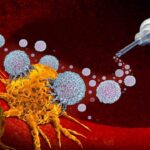- A newly discovered fungus in Northern Ireland hijacks spiders, turning them into zombies to spread its spores.
- The fungus, tentatively named Gibellula attenboroughii, invades spiders’ bodies, forcing them to move to open areas before dying.
- Similar infections have been found in Irish caves, suggesting the fungus may be more widespread.
- Studying zombie fungi can provide insights into ecosystems and potentially lead to new medical treatments.
- The discovery highlights the importance of preserving natural habitats and biodiversity.
A BBC documentary crew in Northern Ireland has uncovered a chilling discovery: a fungus that hijacks spiders, turning them into zombies. This eerie phenomenon, reminiscent of the fictional world of The Last of Us, was found in an abandoned gunpowder storage shed within a nature preserve. The fungus, a newly identified species, takes control of its arachnid host, forcing it to spread spores before meeting a grim end.
A Spider’s Nightmare: The Fungus Among Us
In 2021, while filming a nature program, the BBC crew stumbled upon a dead spider with a lacy white fungus erupting from its body. This discovery, detailed in a recent paper published in Fungal Systematics and Evolution, reveals a fungus that manipulates spiders in a manner similar to the infamous zombie ant fungus, Ophiocordyceps, which inspired the popular video game and HBO series The Last of Us. However, this spider-infecting fungus is only distantly related to its ant-targeting counterpart.
The infected spider was found in a semi-subterranean shed at the Castle Espie Wetland Centre near Belfast. Volunteers assisting the BBC crew noticed the unusual specimen and shared images with Harry Evans, an emeritus fellow at CAB International, a nonprofit focused on agricultural and environmental research. Intrigued, Dr. Evans requested the specimen for further study.
How the Fungus Takes Control
The newly identified fungus, tentatively named Gibellula attenboroughii in honor of naturalist Sir David Attenborough, invades spiders in a horrifying process. João Araújo, a curator of mycology at the Denmark Natural History Museum and co-author of the study, explains that when a fungal spore lands on a spider, it sprouts a root-like structure called a germ tube. This tube drills into the spider’s exoskeleton, allowing the fungus to multiply and take over the host’s body.
Once infected, the spider is compelled to move to an open area, often near cave entrances, where it dies. This strategic positioning helps the fungus spread its spores via air currents, ensuring the infection cycle continues.
A Broader Discovery in Irish Caves
Tim Fogg, a cave explorer, reached out to Dr. Evans after seeing the BBC program, reporting similar fungal infections in spiders within Irish caves. Fogg collected five infected spiders, each engulfed by a tangled mass of fungi. These findings suggest that the fungus may be more widespread than initially thought.
Why This Discovery Matters
Beyond its eerie nature, the discovery of this zombie fungus has significant implications for understanding ecosystems and biodiversity. Spiders play a crucial role in food webs as both predators and prey. Studying the parasites and infections that affect them can provide insights into the health of these ecosystems.
Moreover, zombie fungi like this one could have practical applications. For instance, a chemical derived from a relative of Ophiocordyceps is already used in drugs to prevent organ rejection in transplant patients. Dr. Evans emphasizes the importance of studying these fungi, stating, “These are nature’s chemists and the only source of novel antibiotics and other medicines for the future.”
A Tribute to Sir David Attenborough
The proposed name for the fungus, Gibellula attenboroughii, honors Sir David Attenborough, whose work has inspired countless scientists and nature enthusiasts. Dr. Charissa de Bekker, a molecular ecologist at Utrecht University, praised the tribute, noting that Attenborough’s documentaries have sparked widespread interest in the natural world.
The Bigger Picture
This discovery highlights the complex and often unseen interactions within ecosystems. As Dr. Araújo explains, understanding these fungi—what they infect, how they evolve, and where they come from—is crucial for both ecological and medical research. With natural habitats disappearing at an alarming rate, identifying and studying these organisms is more urgent than ever.
So, if you’re scared of spiders—or zombies—this discovery might give you chills. But it also underscores the fascinating and sometimes terrifying wonders of the natural world, reminding us of the importance of preserving and studying it.


